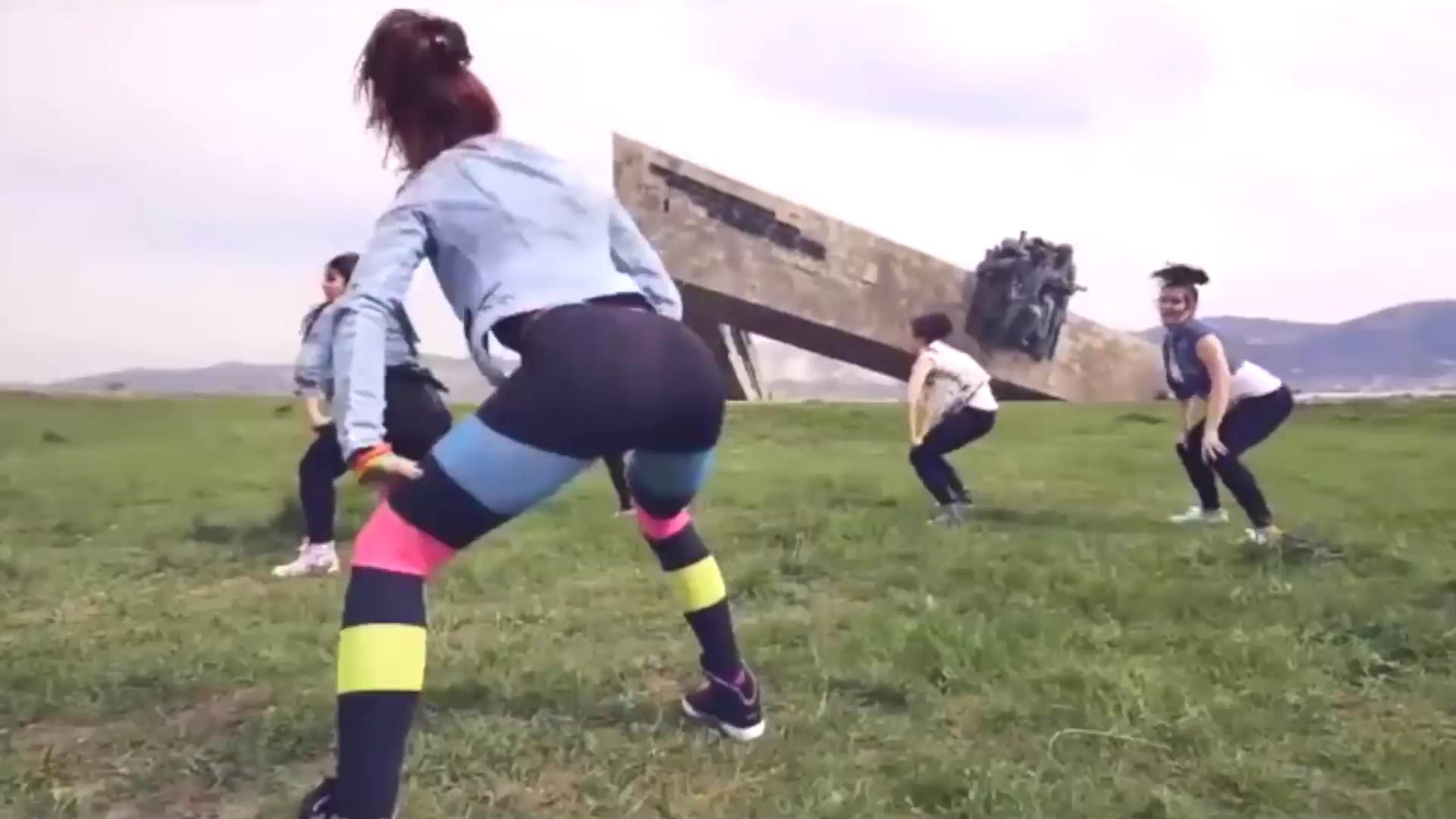Unlock Your Inner Rhythm: A Comprehensive Guide On How To Twerk
Twerking is a great way to dance to your favorite song or workout and have fun simultaneously, offering a unique blend of fitness, self-expression, and pure enjoyment. Far from just a fleeting dance craze, twerking has evolved into a legitimate form of exercise and a powerful tool for building confidence. Whether you're looking to spice up your dance routine, find a new way to stay active, or simply explore a different facet of movement, learning how to twerk can open up a world of rhythmic possibilities.
Once you learn the basic moves, twerking is surprisingly easy to pick up, making it accessible for dancers of all levels, from complete beginners to seasoned pros. This comprehensive guide will walk you through everything you need to know, from the foundational positions to advanced techniques, ensuring you can confidently shake your hips and buttocks in a rhythmic manner. Prepare to discover how this dynamic dance improves your core strength, enhances flexibility, and provides an exhilarating full-body workout.
Table of Contents
- What Exactly is Twerking? Beyond the Basics
- The Surprising Fitness Benefits of Twerking
- Getting Started: Essential Preparations Before You Twerk
- Mastering the Fundamentals: Your First Twerk Moves
- Elevating Your Twerk: Advanced Techniques and Variations
- The Twerk Program: A Structured Approach to Learning
- Learning from the Experts: Instructor Insights on How to Twerk
- Safety First: Preventing Injuries While Twerking
What Exactly is Twerking? Beyond the Basics
Twerking is a popular dance move that involves shaking the hips and buttocks in a rhythmic manner, often while in a squatting or bent-knee position. While it has gained significant mainstream attention in recent years, its roots can be traced back to various African dance forms and West African diasporic cultures, particularly in bounce music scenes in the Southern United States. It's more than just a provocative movement; it's a celebration of body positivity, rhythm, and self-expression. Understanding how to twerk isn't just about the physical action; it's about connecting with your body and the music.
For many, twerking serves as a powerful outlet for creativity and confidence. It challenges traditional notions of dance by emphasizing fluidity, isolation of specific muscle groups, and raw energy. Whether you're doing it solo in your living room or with friends at a dance class, the essence of twerking lies in its liberating and empowering nature. It's a form of dance that encourages you to let go, embrace your body, and feel the beat deep within your core.
The Surprising Fitness Benefits of Twerking
Learning how to twerk offers more than just fun; it’s a fantastic way to boost your fitness and confidence. Beyond the entertainment value, twerking is a surprisingly effective workout that engages multiple muscle groups, contributing to overall physical well-being. It's not just about shaking; it's about controlled movements that build strength and endurance.
Here’s a breakdown of the key fitness benefits:
- Improved Core Strength: The rhythmic movements and squatting positions inherent in twerking significantly engage your abdominal and lower back muscles. This constant engagement helps to stabilize your spine, leading to a stronger, more resilient core. A strong core is fundamental for almost all physical activities and can help prevent back pain.
- Enhanced Flexibility: Twerking requires a good range of motion in your hips, glutes, and lower body. Regular practice naturally enhances flexibility in these areas, which can improve your posture, reduce muscle stiffness, and make everyday movements easier. The dynamic stretching involved helps lengthen muscles and improve joint mobility.
- Cardiovascular Health: While it might not seem like traditional cardio, sustained twerking can elevate your heart rate, providing a decent cardiovascular workout. It’s an energetic activity that gets your blood pumping, contributing to heart health and stamina. Think of it as a fun alternative to traditional cardio exercises.
- Glute and Leg Sculpting: Unsurprisingly, twerking is an excellent workout for your glutes, hamstrings, and quadriceps. The constant squatting and pulsing movements are akin to performing hundreds of squats and lunges, leading to stronger, more toned leg and glute muscles.
- Full-Body Coordination: Twerking demands coordination between your upper and lower body, as well as precise control over isolated muscle groups. This improves your overall body awareness and coordination, which translates to better performance in other sports and daily activities.
- Stress Relief and Confidence Boost: Engaging in an expressive and energetic dance like twerking can be incredibly cathartic. It allows you to release tension, boost your mood through endorphins, and build self-confidence as you master new moves. It's a fantastic way to feel empowered and comfortable in your own skin.
Furthermore, twerking is a great pole dance workout, making it perfect for beginners and anyone looking to master twerking for fitness or performance. The combination of strength, flexibility, and rhythm makes it a unique and enjoyable form of exercise.
Getting Started: Essential Preparations Before You Twerk
Before you dive into the moves, a little preparation goes a long way to ensure a safe and enjoyable experience. Just like any physical activity, proper preparation is key to preventing injuries and maximizing your learning potential when you're learning how to twerk.
- Warm-Up is Crucial: Never skip your warm-up! Start with light cardio like marching in place or jumping jacks for 5-10 minutes to get your blood flowing. Follow this with dynamic stretches focusing on your hips, glutes, and hamstrings. Think leg swings, hip circles, and gentle torso twists. This prepares your muscles and joints for the rhythmic movements to come.
- Choose Comfortable Attire: Opt for clothing that allows for a full range of motion. Loose-fitting shorts, sweatpants, or leggings are ideal. Avoid anything too restrictive. Comfortable athletic shoes are also recommended, especially if you're practicing on a hard surface, to provide support and grip.
- Find Your Space: Ensure you have enough clear space around you to move freely without hitting furniture or walls. A non-slip surface is also beneficial. If you have a mirror, it can be incredibly helpful for checking your form and making adjustments as you learn how to twerk.
- Hydrate: Keep water nearby and stay hydrated throughout your practice session, especially if you're engaging in an energetic workout.
- Set the Mood with Music: Choose music with a strong, clear beat that inspires you to move. Hip-hop, R&B, and dancehall tracks often have the perfect rhythm for twerking. The right music can make the learning process much more enjoyable and natural.
- Patience and Positive Mindset: Remember that mastering any new dance move takes time and practice. Don't get discouraged if you don't get it right away. Embrace the learning process, have fun, and celebrate small victories. The goal is to enjoy the journey of learning how to twerk.
Mastering the Fundamentals: Your First Twerk Moves
The foundation of how to twerk lies in understanding basic body positioning and rhythmic hip isolations. Once you grasp these core elements, you'll find that building on them becomes much easier. We'll start with the essential squat and then move into the primary twerk movements.
The Basic Squat Position: Your Foundation
Every great twerk begins with a solid stance. This position is crucial for stability and for allowing your hips to move freely. To twerk, begin by squatting. Stand with your legs bent and wide apart, like you’re about to sit in a chair. Your feet should be slightly wider than shoulder-width apart, and your toes can be pointed slightly outwards. Try turning your feet out over your knees, which will help align your joints and allow for deeper hip movement. Ensure your back is relatively straight, and your chest is lifted. Your weight should be in your heels, and you should feel stable and grounded. This is your starting point for almost all twerk moves.
The Up-Down Twerk: Building Rhythm
The up-down twerk is one of the most fundamental movements and is excellent for developing rhythm and control. From your basic squat position, you’ll focus on an isolated up-and-down movement of your hips and glutes. Imagine your pelvis is a seesaw, tilting forward and backward. The movement comes from contracting and releasing your glutes and pelvic floor muscles, rather than just bending your knees further. Keep your upper body relatively still, allowing the energy to flow through your hips. Start slowly, focusing on feeling the muscle engagement, and gradually increase your speed as you get more comfortable with the rhythm. This is a core movement you'll see in many "how to twerk" videos.
The Booty Pop Back Twerk: Adding Dynamics
The booty pop back twerk adds a dynamic forward-and-back motion to your twerking repertoire. From your squat position, you’ll push your hips backward, extending your glutes, and then quickly snap them forward, engaging your lower abs and glutes. Think of it as a controlled "pop" of your backside. The key here is the quick contraction and release. This move adds a powerful, percussive element to your dance. Practice isolating this movement, ensuring your knees remain bent and your upper body stable. This move, along with the up-down twerk and shuffle twerk, are three basic twerk moves that you can add your own flavor to or keep as is.
Elevating Your Twerk: Advanced Techniques and Variations
Once you've mastered the foundational moves, you're ready to explore more complex techniques and variations that will add flair and versatility to your twerking. These moves build upon your core understanding of hip isolation and rhythm, allowing you to truly express yourself. In this how to twerk video (referencing general instructional content), you will learn the shuffle twerk, up down twerk, and booty pop back twerk – these are three basic twerk moves that you can add your own flavor to or keep.
The Shuffle Twerk: Smooth Transitions
The shuffle twerk introduces a horizontal, side-to-side movement of the hips, often combined with the up-down motion. From your squat, instead of just popping up and down or front and back, you'll add a subtle "shuffle" or shift of your hips from left to right. This move creates a smoother, more fluid look and can be performed at various speeds. It requires good control over your hip muscles and core to keep the movement isolated. Practice shifting your weight slightly from one foot to the other as you execute the shuffle, allowing your hips to glide. Mastering the shuffle twerk will significantly enhance your ability to transition between different twerk styles.
Mastering the Break Step in Twerk Moves
The break step is a more advanced twerk move that involves a quick, sharp isolation of one hip or glute, often accompanied by a slight lift or "break" in the movement. It adds a dynamic, almost staccato element to your twerking. To perfect the break step, you'll learn how to isolate and quickly contract one side of your glutes, creating a distinct "pop" or "shiver" effect. This move requires precise muscle control and coordination. It's often used as an accent or a transition within a longer twerk sequence. Practice this slowly at first, focusing on the muscle engagement, and gradually increase your speed and sharpness. This move, along with other advanced techniques, allows for a truly expressive and intricate twerk style.
Beyond these, you can learn about the 5 types of twerking, from the classic twerk to the wall twerk, each offering unique challenges and opportunities for expression. Experiment with different speeds, angles, and combinations to find your unique twerk style. Remember, these are three basic twerk moves that you can add your own flavor to.
The Twerk Program: A Structured Approach to Learning
For those serious about mastering how to twerk, a structured program can be incredibly beneficial. Just like any fitness or dance discipline, consistency and a progressive learning path are key to achieving your goals. A well-designed twerk program is designed to teach you how to twerk most effectively, step by step, with detailed explanations for each move.
Such programs often break down the learning process into manageable sessions, building from basic isolations to complex combinations. For instance, a typical program might be set up for three sessions per week, with each session focusing on different aspects:
- Session 1: Foundations and Isolation. This session would focus on perfecting your basic squat stance, hip tilts, and the up-down twerk. Emphasis would be on muscle engagement and control.
- Session 2: Adding Dynamics and Flow. Here, you'd introduce the booty pop back twerk and begin to work on transitions between moves. The goal is to make your movements smoother and more rhythmic.
- Session 3: Advanced Techniques and Choreography. This session might introduce the shuffle twerk, break step, or other variations like the wall twerk. You might also start putting moves together into short sequences.
Each session typically includes a warm-up, skill-building exercises, practice with music, and a cool-down. The benefit of a structured program is that it provides a clear roadmap, ensures you build a strong foundation, and helps you progress at a steady pace. It also reinforces the idea that twerking is a skill that can be learned and refined, much like any other dance form or exercise routine. Consistency is paramount; regular practice, even for short periods, will yield better results than sporadic long sessions.
Learning from the Experts: Instructor Insights on How to Twerk
While self-learning through online videos is a great start, there's immense value in learning from experienced instructors. They can provide personalized feedback, correct your form, and introduce nuances that might be hard to grasp on your own. The world of twerking has seen many talented educators emerge, making it easier than ever to find expert guidance.
For instance, many people learn the easiest how to twerk tutorial on YouTube from our girl Nicole Steen. She is renowned for breaking down complex moves into simple, digestible steps, making the learning journey accessible and enjoyable for everyone. She will teach you the basic moves that can kick start your amazing twerk journey today. Her approach often emphasizes building a strong foundation and understanding the mechanics of each movement before attempting to speed things up.
The credibility of instructors is also growing. We've seen individuals dedicate years to the craft, with some achieving significant milestones like four years and an instructor training certification later. This level of dedication and formal training ensures that the guidance you receive is not only effective but also safe. Certified instructors understand body mechanics, injury prevention, and progressive teaching methodologies, which are crucial for any physical activity.
Beyond individual instructors, resources like Wikihow offer quick video guides on how to twerk, providing a visual aid to complement written instructions. These resources often break down the steps: to twerk, begin by squatting; stand with your legs bent and wide apart, like you’re about to sit in a chair; try turning your feet out over your knees, which will help with hip mobility. Combining these visual and written resources with the insights from certified instructors creates a holistic learning experience that accelerates your progress and ensures you learn the correct and safest way to twerk.
Safety First: Preventing Injuries While Twerking
While twerking is a fun and beneficial activity, like any form of exercise, it carries a risk of injury if not performed correctly. Adhering to safety guidelines is paramount to ensure your journey in learning how to twerk remains enjoyable and pain-free. Remember, your body is a temple, and proper care is essential.
- Listen to Your Body: This is the golden rule for any physical activity. If you feel any sharp pain, stop immediately. Discomfort is normal when engaging new muscles, but pain is a warning sign. Don't push through it.
- Proper Form Over Speed: Especially when you're starting, prioritize correct form over how fast or how big your movements are. Incorrect form can put undue stress on your knees, lower back, and hips. Refer back to the basic squat position: knees over ankles, chest up, core engaged.
- Warm-Up and Cool-Down: As mentioned earlier, these are non-negotiable. A proper warm-up prepares your muscles and joints, while a cool-down with static stretches helps prevent stiffness and aids recovery. Focus on stretching your glutes, hamstrings, quads, and hip flexors.
- Start Slowly and Progress Gradually: Don't try to do too much too soon. Begin with basic moves and shorter sessions. As your strength, flexibility, and coordination improve, you can gradually increase the intensity, duration, and complexity of your twerking.
- Core Engagement: Always remember that twerking improves your core strength. Actively engage your core muscles throughout your practice. This not only protects your lower back but also enhances the power and control of your movements.
- Hydration and Nutrition: Support your body with adequate hydration and a balanced diet. This fuels your muscles and aids in recovery, reducing the risk of fatigue-related injuries.
- Consult a Professional: If you have pre-existing joint issues, back problems, or any other health concerns, it's always wise to consult with a doctor or physical therapist before starting a new exercise regimen, including learning how to twerk.
By keeping these safety tips in mind, you can enjoy all the fantastic benefits of twerking while minimizing any potential risks, ensuring a healthy and fulfilling dance journey.
Conclusion: Embrace the Rhythm, Boost Your Confidence
Learning how to twerk is far more than just acquiring a new dance move; it's an exhilarating journey into self-expression, fitness, and confidence. As we've explored, twerking is a great way to dance to

Russian women arrested for twerking in front of memorial

TWERK » What does TWERK mean? » Slang.org

Twerk | Addictive Fitness